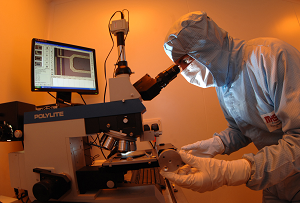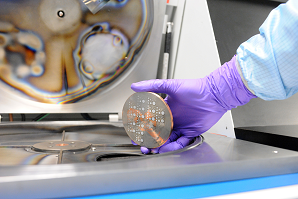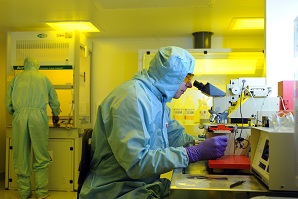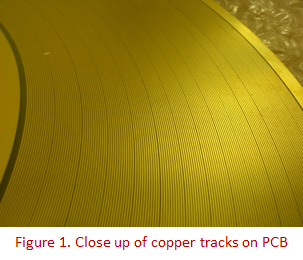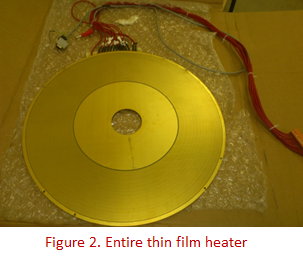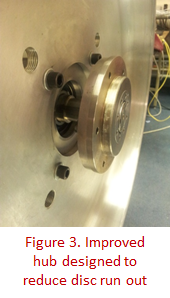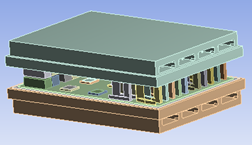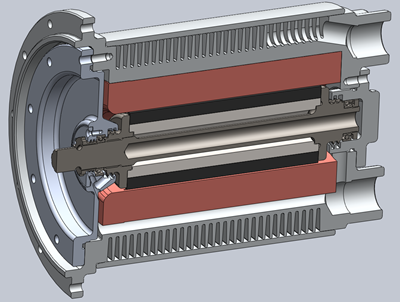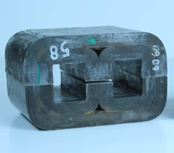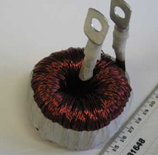Research Themes
The research programme addresses the essential underpinning technologies and tools which are fundamental in achieving the project's objectives, together with a number of generic technology demonstrators.
There are 6 themes which are described in more detail below. The institution highlighted in bold is the theme leader.
- Theme 1 - Power Semiconductors (Warwick)
- Theme 2 - Design Tools (Newcastle, City, Manchester, and Sheffield)
- Theme 3 - Packaging (Nottingham)
- Theme 4 - Motors (Cranfield and Newcastle)
- Theme 5 - Converters (Manchester, Liverpool John Moores, Newcastle, and Southampton)
- Theme 6 - Passive Components (Bristol, Manchester, and Sheffield)
Details on what was achieved in the project for these research themes can be found on the 'Outcomes' page.
Theme 1 - Power Semiconductors (Warwick)
Research Challenge:
Power semiconductor devices are at the heart of all power electronic systems and the EV environment is no exception. The switching of the power device is the primary loss mechanism in the converter and although the efficiency of the converter is very high (> 95%), the losses are still considerable in terms of the dissipation in terms of heat. Thus reducing losses will have a massive impact on the size and weight of the cooling system needed to ensure the reliable operation of the converter. The effective management of heat dissipation and the systems simplification resulting from the reduction of water cooling requirements thus constitutes a major challenge. Alternatively this same challenge can be posed as increasing the power density (W/cm3) of the converter.
Approach:
Current inverter modules in commercial electric and hybrid electric vehicles are comprised of silicon insulated gate bipolar transistors (IGBTs). Switching losses can be significantly reduced and energy conversion efficiency increased if the IGBTs are replaced by metal–oxide–semiconductor field-effect transistors (MOSFET)s. However, unacceptably high conduction losses would result from the MOSFETs with the necessary breakdown voltage capability for the EV power train especially since these devices will be operated at elevated temperatures. This is because of the intrinsic limitations of silicon as a semiconductor material which means that thicker and higher resistance layers (which introduce higher conduction losses) are required to sustain the kind of voltage used in the EV power train. This limitation can be circumvented by the use of wide bandgap semiconductor materials like silicon carbide (SiC) and gallium nitride (GaN) as they offer the potential to go beyond what is possible in silicon. There are many technical issues that still need to be solved, however the main issue is cost. The production of these materials is inherently expensive; however, recently there has been an interest in growing these materials on a silicon substrate. In this project we will develop the growth 3C polytypes of SiC on silicon. This form of SiC is closely matched to the crystal structure of silicon and it has the potential to grow much higher quality oxides than the more common 4H polytype. At the 1200V-1700V range of devices used in the automotive drivetrain 3C offers an excellent compromise of blocking voltage and on-state performance with low cost which would be an ideal solution for the automotive market.
Theme 2 - Design Tools (Newcastle, City, Manchester and Sheffield)
Research Challenge:
With increasingly demanding design requirements for electric power drive trains, the understanding of interacting physical effects, for example the relationship between mutual thermal coupling and electric parasitics, becomes more and more important for a design engineer. Software packages do help in finding optimised designs but none of the software packages available today offer comprehensive solutions. This is because existing software packages are incomplete in describing all electrical, thermal and mechanical interactions. In addition, software packages also fail to provide accurate predictions of lifetime and failure rates, a key reason for which being a lack of validated data.
Approach:
The research will develop a design tool that optimises functional, structural and design integration of the complete power drive train. In a first step the workpackage will characterise all missing electrical, thermal and mechanical links of today’s simulators. In a second step these missing links will be analytically described and validated with the help of experiments. Of particular interest in electric machines is the prediction of convective heat transfer and flow in machines. In power electronics the focus will be on 1) the development and validation of physics-of-failure based models for new assembly processes and 2), in the design of inductors for dc/dc converters, the correlation between magnetic stray fields and thermal conductivity of insulation layers will be analysed. In a third step new heat removal techniques will be investigated. Of interest here are new advanced heatpipes embedded in the rotor of the traction motor that can withstand high centrifugal forces, cooling plates that can change locally the thermal impedance to increase the reliability of power switching devices and high thermal conductivity insulation materials to allow efficient heat transfer from inductive component windings to the coolant. All of these new cooling systems listed will be validated by experiment. The weight and volume savings achieved through the combination of improved design methods and novel technological solutions will be benchmarked against existing commercial solutions in the demonstrators.
|
|
DC/DC converter with reduced magnetic components: DC/DC converters require magnetic components in order to step-up or step-down the DC input voltage. The size of these components can take up 30% of the overall volume of DC/DC converter systems. So far two techniques are known to reduce the size: higher switching frequency and the use of new magnetic materials. Both methods are expensive. Newcastle University developed a new design method for DC/DC converters allowing the reduction of magnetic materials by a factor of 3 without the use of higher switching frequency or new materials. The new design method considers a mathematical expression of the switching event which previously has never been considered before when designing DC/DC converters. With this additional knowledge the overall performance of DC/DC converters is better understood allowing modifications to existing DC/DC control algorithms. These modifications allow stable operations even at reduced inductor size. |
Theme 3 - Packaging (Nottingham)
Research Challenge:
A typical power converter will consist of semiconductor power modules, a physically separate DC-link, a separate input and/or output filter, EMI filters, gate drivers, controllers and sensors. Traditionally, each of these entities is designed separately, cooled separately and has its own operational requirements. Such an approach is restrictive: it overlooks the strong interactions between the elements, for example in realising a converter-wide thermal and electromagnetic design, and cannot take advantage of potential performance gains and space saving from physical integration at “die” level. Furthermore, the interconnection of physically large discrete components makes it difficult to reduce parasitic inductances to an acceptably low level and leads to concentrated thermal sources that are difficult to cool effectively.
Approach:
The research will investigate solutions for the structural integration of power electronic converters to meet targets for increased power density and reduced cost without compromising thermal performance or reliability. We will challenge accepted thinking on converter construction through: 1) an emphasis on integrated, modular assemblies which combine electromagnetic, thermal and mechanical functions rather than piecemeal assemblies of components and 2) a detailed consideration of operational constraints (e.g. available cooling medium, reliability expectations) as well as electrical function. We will work with unpackaged “die” level components and investigate techniques for the efficient integration of semiconductors, passive components, thermal management and electrical interconnect within a single envelope or package. A parallel programme of work will investigate the reliability of the candidate integration technologies including detailed experimental studies of wear-out mechanisms and development of reliability models. In this way we will reduce the risk of failure of the demonstration activities and maximise the potential worth of the research to the automotive community.
Theme 4 - Motors (Cranfield and Newcastle)
Research Challenge:
To penetrate the Low Carbon Vehicles market, next-generation electric traction motors must meet competing requirements of high efficiency, light weight, low cost and high reliability. In practice these requirements will be further subject to the actual driving cycles of the vehicle, which can impact greatly on the potential solution space due to the related thermal effects.
The design of the motor providing the optimal performance under these driving conditions presents an unprecedented challenge of extending the boundaries of knowledge in electromagnetism, power electronics, thermal management and material science. Furthermore, it has become strategically important to develop viable alternative designs that are robust to uncertain downstream supply chains of rare earth metals. Successful and timely implementations of these designs involve optimisations at both component and subsystem levels that harness new materials, new topologies and novel control strategies.
Approach:
A rigorous suite of machine topologies with a view to meeting different market sectors’ requirements will be identified. The scoping of optimised induction, switched reluctance, and permanent magnet (PM) motors rated at 30kW (cont.) and 2000rpm, with outer rotor and axial flux configurations will be undertaken against the four identified requirements.
Three motor designs, with the associated drives, will be ‘championed’ for full optimisation at component and topological levels. Among them a PM motor will be chosen for benchmarking. The motors will then be designed for manufacture together with the inverters, and will subsequently be tested comprehensively. Tests have shown that a non-rare-earth (ferrite) PM can work at up to 250 oC degree, but it becomes very vulnerable below 0 oC degree. Between 20 and 80 oC, ferrite can give quite reasonable performance.
The motors will be benchmarked against one another in a number of interesting and realistic driving cycle scenarios, to be overseen by industry advisors. It is envisaged that the IPR and know-how created within the package will pave the way for a UK-based sustainable suite of motor drive solutions for future LCV markets.
Theme 5 - Converters (Manchester, Liverpool John Moores, Newcastle and Southampton)
Research Challenge:
The current piecemeal design of the on-board converter systems to interface energy sources and storage elements with the traction machine and auxiliary loads results in a complicated, heavy, expensive and non-optimised solution. For example on-board chargers are dead weight during driving operation and due to their limited capacity (typically 3 kW, single-phase), only provide relatively slow charging. By exploiting the traction drive (typically rated up to 60 kW) for the grid connection, the separate charger becomes redundant and rapid charging from a three-phase supply is possible. Also, the topologies and components used for the high-power (60 kW) DC-DC converters are far from optimum – operating frequencies are limited to around 20 kHz by the losses in high voltage IGBTs / diodes, and magnetic component design is limited by poor thermal management. The magnetic components typically account for 30-40% of the equipment weight and are one of the main limitations to converter miniaturisation. This work package will research optimised, power dense energy conversion techniques for on-board systems.
Approach:
Research on the traction drive and grid interface will focus on a six-phase traction system topology, which requires a larger number of lower-rated semiconductor devices, simplifying thermal management, and providing the possibility of continued operation post-fault. In addition to developing the most effective limp-home operating regimes, techniques will also be devised for using the power electronics and machine windings as the grid connection converter. Bi-directional control algorithms for the system will be developed to allow short-term power transfer into the grid, enabling an array of vehicles to provide rapid grid support and load management.
The technology bottleneck limiting the miniaturisation of DC-DC converters will be tackled by multiple interlinked strands of research: operating frequencies will be increased through soft-switching techniques and the use of new device technologies, in particular SiC for high voltage (600 V) parts of the system (linking with the devices theme), optimised design and thermal management of the magnetic components (linking with the passives theme), modular, interleaved topologies for the low voltage high current (100 V, 300 A) parts of the system (fuel cell / super-capacitor interface), and control / modulation methods based on the saltation matrix of the system that enable stable operation with reduced (up to 50%) inductive filter requirements. A combination of analysis, simulation and experimental testing will be used.
Theme 6 - Passive Components (Bristol, Manchester and Sheffield)
Research Challenge:
Passive components can represent 50% of the mass of a power converter. Their function is to provide transient energy storage and filtering; the later to address power quality and electromagnetic interference. Alongside developments in high temperature and faster switching power semiconductors there is a need for research into compatible, compact and lightweight passive components.
Approach:
The miniaturisation of passive components requires a complete understanding of their thermal and electromagnetic behaviour. At high frequencies parasitic elements become dominant and dictate the magnitude and distribution of loss. Advanced electromagnetic and loss models are required to understand these effects. In tandem alternative cooling and packaging technologies need to be researched. High fidelity, reduced order thermal networks are required to model the new developments within in a design environment coupled to the advanced loss analyses.
Significant improvements in miniaturisation are only possible through multi-physics design optimisation. Coupled parametric electromagnetic and thermal analyses will be undertaken using a methodology based on combining 2D/3D finite element electromagnetic field models, lumped parameter thermal models and analytical models for parasitic loss estimation within an optimisation frame work. Related research into high specific output, liquid cooled electrical machines has shown particle swarm optimisation methods to be an effective and computationally efficient approach for such problems. These modelling activities will be validated through test undertaken on sub-elements and wound component prototypes.
